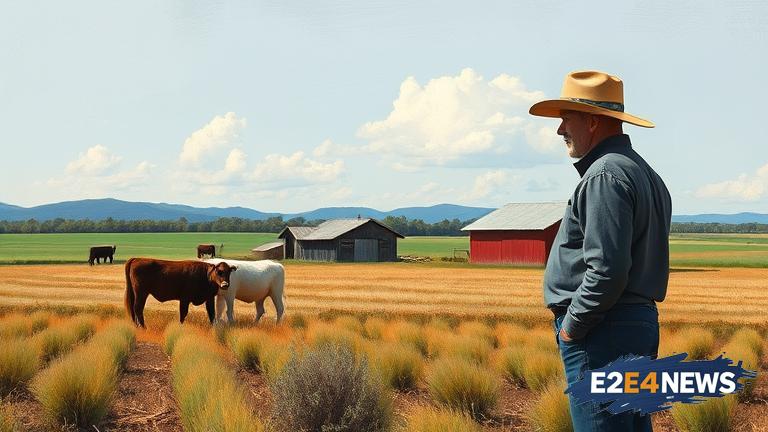Rural farmers across the United States are navigating a challenging landscape as federal programs and grants that were once a lifeline for their businesses have been cut. The sudden cancellation of these initiatives has left many farmers without access to vital support and resources, making it difficult for them to stay afloat. The cuts, which were announced earlier this year, have affected a wide range of programs, including those that provided financial assistance, technical support, and market access. As a result, many rural farmers are being forced to rethink their business strategies and seek out alternative sources of funding. Some farmers have reported that the loss of federal funding has already had a significant impact on their operations, with many struggling to pay their bills and keep their farms running. The cancellation of these programs has also raised concerns about the long-term viability of rural farming communities, which are often heavily reliant on these initiatives. Many farmers are worried that the loss of federal support will lead to a decline in the number of rural farms, which could have far-reaching consequences for the entire agricultural industry. In addition to the financial challenges, the cuts have also created uncertainty and anxiety among rural farmers, who are unsure of what the future holds. Some farmers have reported feeling abandoned by the government, which they believe has failed to provide adequate support for their industry. The situation has also sparked concerns about the impact on rural communities, which often rely heavily on farming as a source of income and employment. As the situation continues to unfold, many rural farmers are calling on the government to reinstate the canceled programs and grants, or to provide alternative forms of support. Some farmers have also begun to explore alternative sources of funding, such as private investors and crowdfunding campaigns. However, these efforts are often time-consuming and unpredictable, and may not provide the same level of support as the federal programs. The cancellation of the federal programs has also highlighted the need for greater diversification and resilience in rural farming communities. Many farmers are now looking to diversify their operations, by exploring new markets and revenue streams, in an effort to reduce their dependence on federal funding. Others are investing in new technologies and infrastructure, such as renewable energy and precision agriculture, in an effort to improve their efficiency and competitiveness. Despite the challenges, many rural farmers remain optimistic about the future, and are determined to find ways to adapt and thrive in the face of uncertainty. However, the situation remains precarious, and the long-term consequences of the cuts are still unclear. As the agricultural industry continues to evolve, it is likely that rural farmers will face ongoing challenges and uncertainties, and will need to remain agile and adaptable in order to survive. The cancellation of the federal programs has also sparked a wider debate about the role of government in supporting rural farming communities, and the need for more sustainable and equitable forms of support. Some experts have argued that the current system of federal funding is inadequate and inefficient, and that new approaches are needed to support the long-term viability of rural farming communities. Others have called for greater investment in rural infrastructure, such as roads and broadband, in order to improve access to markets and services. As the situation continues to unfold, it is clear that rural farmers will need to be creative and resourceful in order to navigate the challenges ahead. The future of rural farming communities hangs in the balance, and it remains to be seen how the cancellation of the federal programs will ultimately play out.





